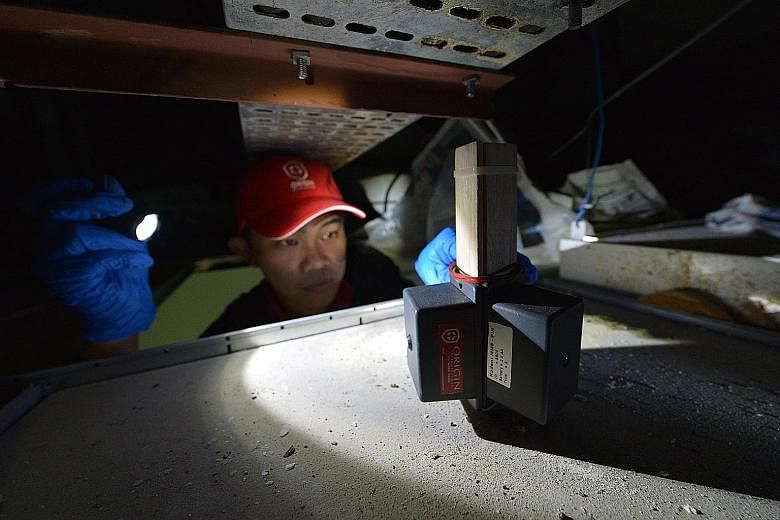The rats have evolved, but humans have not.
And that is why the wily rodents plaguing homes and businesses here show no signs of being suppressed, said pest busters interviewed by The Straits Times.
"Rodents are very intelligent, very adaptable. They learn to avoid traps, which poses a huge problem," said Mrs Deanne Ong, director of Origin Exterminators.
Several pest busters told ST that common industry practices - such as using glue boards and cages to catch rats - have not caught up with evolving rodent behaviour.
Using data to study rat movements and the rodents' colony is the way forward, rather than a wait-and-see approach, which can be labour driven.
Said Mrs Ong: "Pest managers and building owners should look at gathering real-time data using sensors, that then dictates how traps are placed.
"It should be a long-term effort, not a project-based approach that building managers are currently taking," she added.
The problem of rat infestation is in the spotlight again after it was reported that rats had re-emerged in Bukit Batok last month, a year after extensive efforts to wipe them out.
At Punggol's Waterway Point mall last month, a diner complained that a rat fell from the ceiling above her while she was waiting for her meal at The Coffee House eatery. Rats are a problem not just in the heartland, but also in town.
The Straits Times understands 56 rats were caught at a Chinese restaurant in Orchard Road between January and February this year.
The National Environment Agency recorded about 6,700 rat-related complaints last year, up nearly 68 per cent from the 4,000 or so complaints in 2014.
Said PestBusters founder Thomas Fernandez: "Rats are really prevalent everywhere. All the shopping centres in Singapore, they have a huge problem."
Agreeing, Mrs Ong said: "It is just a question of how many and how many are caught."
Mr Fernandez's firm received 1,563 inquiries last year - 55 per cent more than in 2014.
For pest control firm Rentokil Initial Singapore, sales from anti- rodent infestation efforts rose 18 per cent in the first quarter of this year over the same period last year.
Ms Junie Yeo, the company's marketing director, suggested that new buildings adopt a rodent-proof design. A 1cm aperture is all that a rat needs to squeeze into a space, she added.
Pest control companies advise building owners to run a thorough "pest check" on a new building before handing it over to tenants.
This includes checking false ceilings, electrical risers and piping as these are a form of internal transportation system that the rodents use to get from one point to another within a building or through an interconnected building.
Prevention through measures such as good hygiene and sanitation practices is better than cure, said pest busters.
Said Mrs Ong: "When they (building owners) have an infestation and are under pressure to take action following complaints from users, this shows a reactive mindset to the problem.
"This is, unfortunately, still the industry norm," she said.
Said Mr Fernandez: "It is a whole eco system because it is all integrated. Everybody has a role to play."

